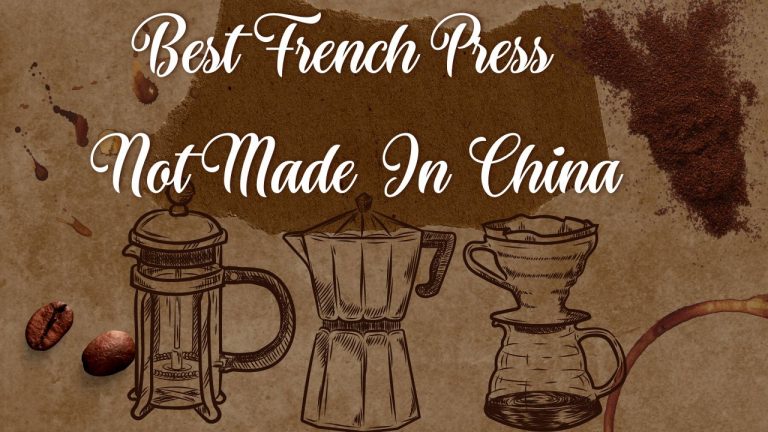7 Different Types Of Vodka With Images

Did you know that there are several different types of vodka? You read it right. We’ll talk about the different types of vodka and what makes them special in this post.
Scroll down and read on to find out more about these different types of vodka.
Types Of Vodka
What Is Vodka?
Let’s first define vodka before moving on to the different types of vodka, let us first define vodka. A vodka is a distilled alcoholic drink that is transparent. Russia, Sweden, and Poland are the places where various types first appeared. Although there may be small amounts of flavorings and impurities, water and ethanol make up the majority of vodka’s ingredients. In the past, it has been produced by distilling the liquid obtained from fermented cereal grains. More recently, potatoes have been incorporated. Today, several brands also use honey, fruits, or maple sap as their base.
Most vodkas today have 40% alcohol by volume (ABV) as of the 1890s . A minimum alcohol concentration of 37.5% for vodka has been set by the European Union. A minimum of 40% alcohol must be present in vodka to be sold in the United States.
Vodka’s popularity increased steadily and rapidly when it debuted in US, despite the fact that it remained an oddity outside of Europe until the middle of the 20th century. Sales of vodka eventually surpassed those of bourbon, America’s “native” liquor, in 1975.
Between the 14th and the 16th centuries, vodka originated in either Poland or southwestern Russia. The device used to manufacture vodka, which is made from common grains like potatoes, has been updated over time, but the fundamental operation has stayed relatively same.
Vodka Production
The majority of modern vodka is distilled from sorghum, wheat, or rye, though almost any plant could be used. Vodka is distilled using soy, potatoes, grapes, molasses, rice, corn, and beets, most particularly sugar beets, and occasionally still does.
Vodka must be at least 37.5% alcohol by volume, regardless of the source, to be allowed to use the label; the majority fall somewhere around 40%, although some go a few percentage points higher. The remaining portion of the bottle is mostly made up of water.
Once the spirit is almost entirely alcohol, vodka distillers add water and continue to run the still. Water with a distinct flavor can give a spirit a delicate yet distinctive flavor.
A lot of vodka manufactured in Europe and the US goes through a rigorous filtration process both before and after distillation to get rid of impurities that could alter the flavor before flavoring agents are added.
Traditional vodka producers, on the other hand, are more at ease with the organic outcomes of distillation; they prefer to forego filtration and keep the distillation’s byproducts, and they base any flavoring they use on what the process produces.
Check out the different types of vodka below.
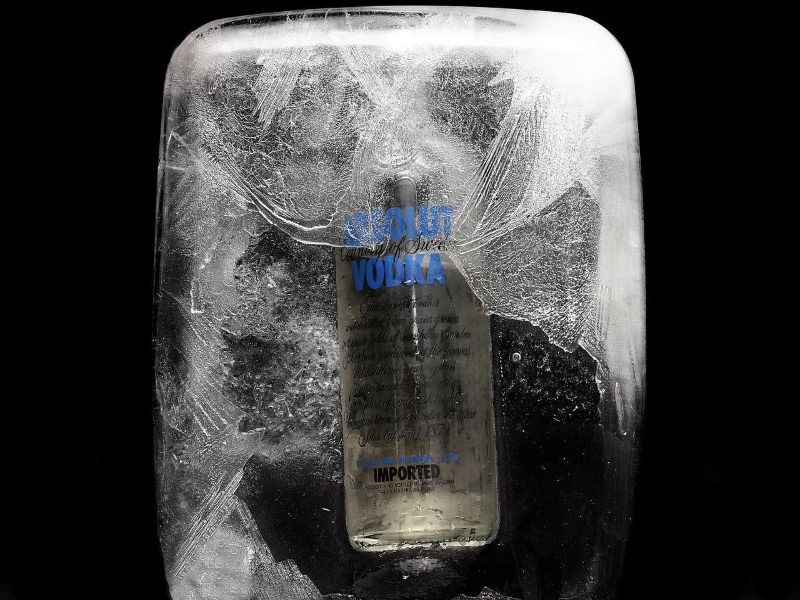
1 . Grain Vodka
Wheat, rye, and barley are just a few of the grains used to make grain vodka. Grain vodkas are also distilled multiple times to get rid of any leftover flavors, just like potato vodka. Vodka made from grains is typically regarded as smoother than vodka made from potatoes.
Because it typically costs less than standard vodka and has a distinctive flavor, this type of vodka is very popular.
Grain vodkas are thought to taste different from ordinary vodka because of this; some claim they have an earthy or nuttier flavor. Since they don’t cost as much as standard vodka, they are a popular option for people who wish to savor the taste of vodka.
Grain vodkas are typically produced using a variety of grains, such as wheat and corn. The most well-liked grain vodka is corn, which is renowned for its smooth and sweet flavor. Another well-liked vodka is wheat vodka, which has a little richer flavor than corn vodka.
The most popular way to take grain vodka is as a shot, but it can also be found in mixed drinks. The vodka tonic, vodka cranberry, and vodka martini are a few well-known mixed drinks that use grain vodka.
This vodka typically has an alcohol by volume (abv) of about 40%. The abv of some grain vodkas, though, can reach 50%.
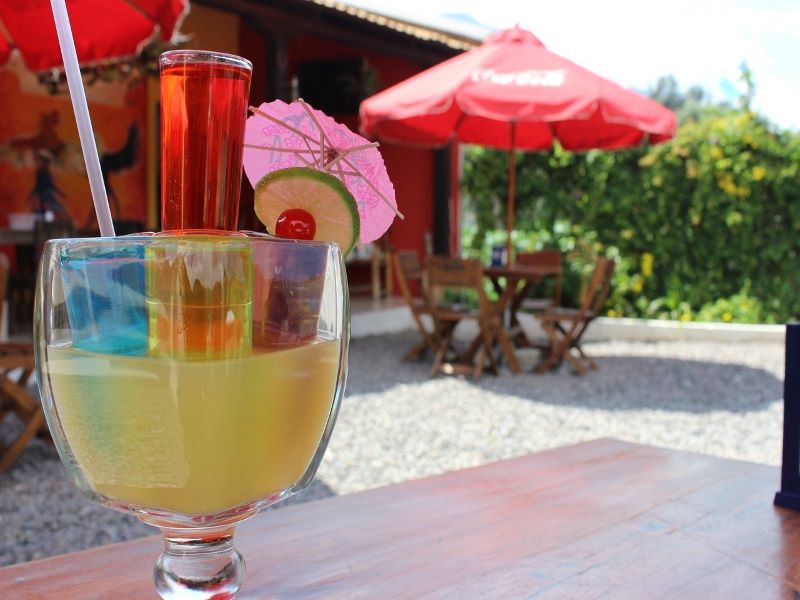
2. Fruit Vodka
A type of vodka created from fruits is called fruit vodka. Cranberries, raspberries, and blackberries are a few of the most frequently utilized fruits in fruit vodkas.
Fruit vodka is different from flavored vodkas, because flavored vodkas are often created by infusing the spirit with flavors like cucumber or pineapple. Fruits are fermented and then distilled to create fruit vodkas.
Cocktails often include fruit vodka. It can be used to prepare a variety of cocktails, including cranberry and raspberry vodka cocktails. Fruit vodkas can be sipped neat or on the rocks as well as on their own.
Fruit vodka typically has an alcohol by volume (abv) of about 40%. Yet, the alcohol by volume (abv) of some fruit vodkas can reach 50%.
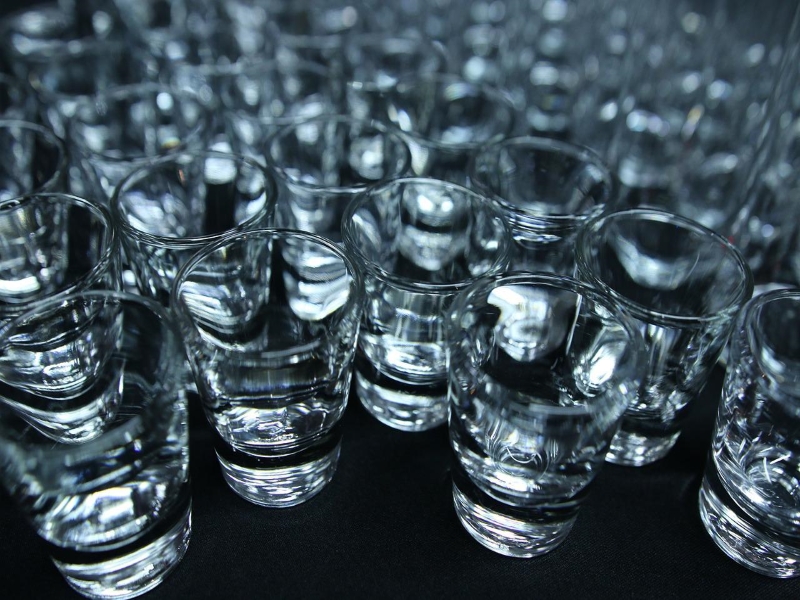
3. Plain Vodka
Vodka that has not been flavored or combined with any other ingredients is known as plain vodka. It is sometimes filtered using charcoal or quartz crystals to get rid of any impurities and is commonly produced from corn, wheat, or potatoes. A two-week period is needed to manufacture plain vodka.
Although it doesn’t have a significant flavor, plain vodka is smooth and slightly sweet. It doesn’t have a strong taste and is primarily alcohol. Ordinarily, 40% alcohol by volume (ABV) makes up plain vodka.
The most popular way to drink this type of vodka is in cocktails made with additional alcoholic beverages and ingredients. Martinis made with vodka are a common example. You can also drink it straight up or on the rocks.

4. Flavoured Vodka
Vodka that has been flavored with various flavors is known to as flavoured vodka. This type of vodka comes in a wide variety and has various flavors. The most well-liked flavors are peach, cherry, raspberry, and vanilla.
Flavoured vodka has gained popularity lately. This is so that more people may experience the flavor, which is distinct from standard vodka. Furthermore, flavor-infused vodka is frequently used in cocktails, making it suitable for use by people of all ages. Flavored vodka is produced by flavoring standard vodka with various components. Fruits, spices, and other flavorings are only a few examples of the many ingredients. As a result, the vodka has a distinctive flavor from standard vodka.
You must first produce a flavoring infusion in order to make flavored vodka. You can achieve this by mixing various fruits, herbs, or spices with vodka. The vodka should be given at least a few days to steep once the flavoring has been added. By doing so, the vodka will have a full opportunity to absorb the flavors. The vodka can be filtered and bottled after a few days. Depending on the flavor, the alcohol by volume (abv) of flavored vodka might differ, but it usually stays around 35%.
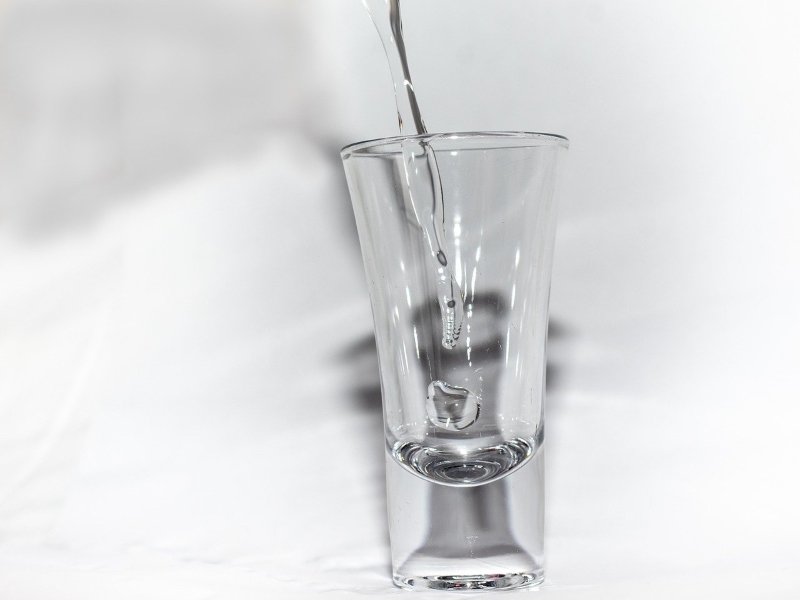
5. Rye Vodka
A variety of vodka called rye vodka is created from the rye grain. Certain individuals prefer it over other selections since it has a different flavor profile from other varieties of vodka.
The flavor of rye vodka differs from that of wheat vodka. It is frequently described as being more earthy with caramel and spice hints. This is a result of the many kinds of grains utilized in the manufacturing process. Since rye is a considerably more potent grain than wheat, it gives the vodka more flavor.
This vodka is created using a method that is similar to that of other drinks. The major distinction is that rye grain is used to make rye vodka rather than potatoes or other grains. After being ground into flour, the rye grain is combined with water and yeast. To create vodka, the mixture is fermented and distilled.
Rye grain is used to make rye vodka, which is frequently sipped neat, in popular cocktails, or on the rocks. It can be utilized in cooking as well. The common alcohol content of rye vodka is 40%.
6. Molasses Vodka
A type of vodka created from molasses is called molasses vodka. It is frequently used in classic cocktails and has a subtle sweetness and smokey flavor. The Black Russian and the White Russian are two well-known drinks that use molasses vodka. Manufacturing molasses vodka follows a similar method as making other forms of vodka. After the molasses and water are combined and distilled, the vodka is filtered and packed.
The use of sugarcane molasses in the production of molasses vodka gives it an unique taste. Because of this, it has a distinctive flavor profile from other kinds of vodka.
Although it is frequently drank as a shot, molasses vodka also goes well in mixed beverages. It’s crucial to keep in mind that a little goes a long way with this food because of its potent flavor. ABV of molasses vodka is about 40%.
7. Potato Vodka
Potato vodka is created by mashing potatoes, which is followed by distillation. The benefit of potato vodka is that it doesn’t have a strong alcoholic flavor, which prevents other flavors from overpowering the flavor of the spirit. Cocktails frequently call for this brand of vodka.
Other Varieties Of Vodka
Polish Vodka
A variety of vodka produced in Poland is known as Polish vodka. One of the most often consumed vodka varieties worldwide is this one. Rye, wheat, and barley are the main ingredients in Polish vodka. It is renowned for its superior quality and flavor.
40% alcohol by volume (abv) is what defines Polish vodka. Relatively speaking, this is far higher than some of the other vodka varieties available.
The drink is smooth and flavorful despite the high alcohol content. Polish vodka is excellent for sipping or blending into drinks.
History Of Polish Vodka
Since the early Middle Ages, Poland has produce vodka according to local customs that are as diverse as those used in the making of French cognac or Scottish whiskey.
At the end of the 16th century, Kraków, where spirits were first transported to Silesia before 1550, saw the start of considerably larger-scale vodka manufacture in Poland. Additionally, Silesian cities purchased vodka from Poznan, which in 1580 had 498 active distilleries of distilled spirits. Gdansk, though, quickly caught up to both of these cities. Polish vodka was well-known in the 17th and 18th centuries in the Netherlands, Denmark, England, Russia, Germany, Austria, Hungary, Romania, Ukraine, Bulgaria, and the Black Sea region.
Initial production techniques were inadequate. The liquor was typically low-proof, and numerous distillations were required. The first distillation, known as brantówka, the second, szumówka, and the third, okowita (from aqua vitae), all typically had 70–80% ABV). The liquor was then diluted, producing a simple vodka (30–35% ABV) or a stronger version if the dilution was carried out in an alembic. Jan Pawe Biretowski and Jan Chryzostom Pasek both wrote descriptions of the precise production techniques in 1768 and 1774, respectively. The first vodka was produced in the late 18th century using a variety of uncommon ingredients, even using carrots.
American Vodka
American vodka has a rich tradition that began in the early 1900s. During World War 1, it was initially developed in the United States. American vodka was developed in response to the war’s impact on the availability of grain.
Most American vodka is produced using corn. The vodka is made by first turning the corn into a powder, which is then combined with water and other substances.
There are various vodkas that can be produced using various ingredients. Potato vodka, wheat vodka, and grape vodka are a few of the most well-liked varieties of vodka.
An average 40% alcohol by volume (abv) for American vodka.
French Vodka
A variety of vodka produced in France is known as French vodka. The fact that it is distilled from grapes rather than grain sets it apart from other varieties of vodka. It tastes smoother and a little bit sweeter than other vodkas as a result.
Early in the nineteenth century, Simon Thompson is recognized with producing the first French vodka. He went to France and was originally from England. His alcohol immediately gained attention. French vodka has undergone numerous modifications through the years.
French vodka often has a somewhat lower abv than other forms of vodka, approximately 35%.
Russian Vodka
Russian vodka is a variety of vodka produced in Russia. Although some vodkas are created from potatoes, vodka is primarily distilled from grains. This is considered a premium vodka.
Russian vodka has a distinct flavor from other varieties of vodka since it is made from several grains, mostly wheat. Russian vodka has a lower alcohol concentration than some other variations, making it much smoother and simpler to consume.
Russian vodka often has a lower abv than many other forms of vodka, at 40%.
History Of Russian Vodka
A monk named Isidore from the Chudov Monastery inside the Moscow Kremlin is believed to have developed the first Russian vodka recipe around the year 1430. He invented a new, better-quality form of alcoholic beverage according to his unique understanding and distillation device. For a long time, only the Grand Duchy of Moscow and no other Russian principality produced this “bread wine”, as it was originally termed. This beverage was therefore intimately linked to Moscow.
The alcohol concentration of the beverage didn’t go up above 40% ABV until the middle of the 18th century. The liquor was known by a variety of names, most frequently “fire wine”, “bread wine”, or even just “wine” in some places, depending on quality, alcohol content, filtering, and the number of distillations.
Grape wine might have been so expensive in some places that only aristocracy could afford to drink it. Before consumption, burning wine was typically diluted with water to a 24% ABV or below. It cost a lot and was typically sold in bars. The term “vodka” was already in use at the time, but it referred to herbal tinctures (comparable to nalewka), with up to 75% alcohol by volume.
Netherlands Vodka
A variety of vodka produced in the Netherlands is known as Netherlands vodka. This It is a grain-based vodka uses different grains than the majority of other varieties of vodka. Rye, wheat, and spelt are the three main grains used to manufacture Netherlands vodka.
Netherlands vodka is a little hazy. Although it is unknown who made the first batch of vodka or where it was made, it is thought to have been produced in the Netherlands in the early 1800s.
A variety of vodka produced in the Netherlands is known as Netherlands vodka. It tastes slightly sweet and has a smooth, creamy texture. It is frequently relished when combined with various fruit juices or sodas.
The usual ABV for Netherlands vodka is 40%.
Scottish Vodka
A variety of vodka manufactured in Scotland is known as Scottish vodka. It can be distilled up to three times and is created from malted barley. After that, the vodka is filtered through limestone and charcoal before being bottled.
Usually, 40% ABV vodka is produced in Scotland.
Swedish Vodka
Swedish distilled drinks were known as brännvin, which comes from the word “burn-wine”, rather than vodka until the 1950s. Since the late 15th century, this beverage has been made in Sweden, though the overall production was fairly minor in the 17th century. The production was halted multiple times due to a lack of grains, but starting in the early 18th century, it eventually increased. The production of potatoes, which were originally a grain crop, began in the late 18th century, and they took over in the early 19th century. Distillery equipment began to advance in the early 1870s.
Unflavored Swedish brännvin gradually began to be referred to as vodka starting in the 1960s. Explorer Vodka, which was first launched in Sweden in 1958 with an eye toward the American export market, was the first product to utilize this term. It finally fell short of success, although it is still one of the most well-known vodka brands in Sweden today. Absolut Rent Brännvin, which was first produced in 1879, served as the inspiration for the 1979 debut of Absolut Vodka.
Use Of Vodka For Cooking
Did you know that vodka can also be used in cooking? That’s right, many recipes either benefit from its presence or depend on it as a key element. Vodka sauce is a tomato sauce, cream, and vodka-based pasta sauce that sprang to fame in the 1970s. Pie crusts can be made flakier with vodka by using it in place of water when baking. It can also be added to cheesecake, bitters, and seafood meals.
Frequently Asked Questions
Alcohol has calories, so when you consume it in excessive amounts, it may result in weight gain. Alcohol itself has calories, but many alcoholic beverages also come with mixers and additions that can be high in sugar and calories.
Yes. You can use it to make vodka lemonade.
Vodka blends well with soda water, ginger ale, and fruit juices like orange or cranberry.



